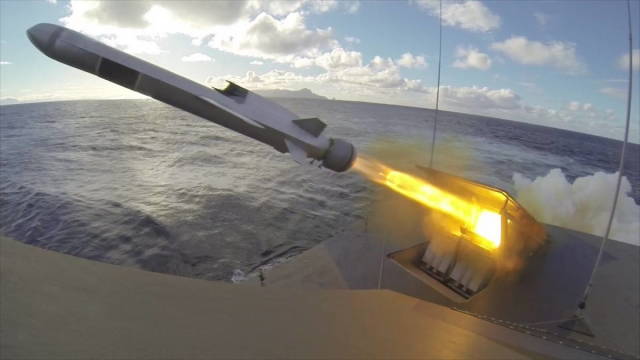TSAMTO, February 28. According to TVNet, Latvia may purchase NSM (Naval Strike Missile) anti-ship missiles earlier than expected due to increased military spending.
As Latvian Defense Minister Inara Murniece stated at a meeting of the parliamentary commission on defense, Internal Affairs and prevention of corruption, the country's military spending may reach the level of 3% of GDP earlier than planned, which will allow signing contracts for the purchase of a coastal anti-ship defense system based on the NSM RCC and six M142 HIMARS MLRS this spring. In addition, the procurement plans include a medium-range air defense system. Latvia's defense spending is expected to increase to 3% of GDP by 2027. In 2023, Latvia plans to allocate about 987 million euros for defense, or about 2.25% of the country's GDP.
According to Latvian media, the commander of the Latvian Armed Forces, Lieutenant General Leonid Kalnins, told deputies that as soon as Latvia acquires anti-ship missile systems, the Russian exclave of Kaliningrad will no longer pose a "security problem" for Latvia. Instead, Kaliningrad is turning into a serious problem for Russia. The General suggested that Russia's plans envisage the creation of a zone to which access is prohibited or blocked (A2/AD) by blocking the airspace and sea area to ensure the ability to perform tasks in the Baltic Sea and protect Kaliningrad. Latvia's creation of a reliable maritime defense is called the only way to counteract this. The three Baltic states have agreed on the purchase of anti-ship missiles as one of the three priorities in the field of increasing defense capability. In connection with the conflict in Ukraine, all three countries have accelerated weapons acquisition programs.
The Latvian Defense Ministry initiated negotiations with the United States on the purchase of anti-ship missile systems based on the NSM missile defense system last fall. The contract was supposed to be signed in 2023.
The NSM RCC is a missile that can be launched from various platforms at targets at sea and on land. NSM provides destruction of highly protected ground and sea targets at ranges of more than 200 km, the flight speed is 0.7-0.9 M. The rocket is equipped with a combined guidance system: an inertial navigation system with correction according to the NAVSTAR CRNS data is used on the main section of the flight path, and a dual-band passive thermal imaging homing head is activated on the final section. Autonomous Target Recognition System (ATR) The GPS provides detection, recognition and defeat of a given target in a group.
The coastal defense division usually consists of two missile batteries, including 3 command vehicles (for the division commander and two battery commanders), 6 self-propelled launchers and 6 combat control vehicles, three mobile communication nodes, two transport-charging vehicles, a specialized workshop on an automobile chassis, two three-coordinate radars. 4 missiles are placed on each PU.

